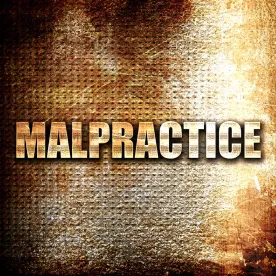This is a Limitations of Actions Act 1958 (Vic) (LAA) ruling that was handed down on 16 June 2023 in the context of a medical negligence claim.
Adam and Michelle Goodridge brought an application for an extension of time in which to bring the claim, under section 27K of the LAA.
The Goodridges’ application for an extension of time was granted.
Background to Negligence Claim
This claim was brought by the Goodridges in relation to the circumstances of Michelle Goodridge’s antenatal care and Adam Goodridge’s birth. Dr. Geoffrey Baker was Ms. Goodridge’s obstetrician and provided private antenatal care to Ms. Goodridge in 1996.
The writ and statement of claim were filed on 15 February 2022, some 26 years after the birth.
It is alleged that Mr. Goodridge sustained hypoxia during the birth process when he was born on 27 July 1996 at the hospital where he was born. Following his birth, Mr. Goodridge was diagnosed with cerebral palsy and dystonic quadriplegia.
On 4 July 1996, an antenatal ultrasound had been performed that allegedly showed that Mr. Goodridge was in the footling breech positon and was in the 95th percentile for weight.
The Goodridges allege that reasonable medical practice required Dr. Baker, on receipt of the ultrasound scan, to advise Ms. Goodridge that birthing a baby vaginally in the footling breech position carried a risk of injury to the baby and that the preferred mode of delivery was to arrange a caesarean section.
Dr. Baker admits that the baby was in the breech position, but he denies that the baby was noted to be in complete or footling breech. He likewise denies that reasonable medical practice required him to advise that footling breech carries risk to the baby with vaginal delivery and to recommend a pre-term caesarean section.
Factors Relevant to The Application of The LAA
Salient points relevant to the Supreme Court of Victoria’s (the Court) consideration of the limitations point are as follows:
-
In 1998, approximately two years after the birth, Ms. Goodridge had sought legal advice from John Arranga, then of Ryan Carlisle Thomas (RCT), to consider bringing a claim in respect to the birth.
-
Those discussions with Mr. Arranga did not go past the initial consultation phase, in part due to Ms. Goodridge’s concern regarding payment of upfront legal fees. The relevant medical records had not been requested by Mr. Arranga, and no reports had been commissioned at that time.
-
Ms. Goodridge did not recall the advice given about the limitations point, but she said that her impression was that she had been advised there was no “pressing urgency” to bring a claim. This was due to the fact that the limitations period in 1998 would have entitled Mr. Goodridge to bring a claim for six years after he turned 18.
-
Ms. Goodridge gave evidence that in the years since the birth, she had been under the impression that Mr. Goodridge’s birth injury was the “fault” of the hospital where he was born, where the labor and delivery had occurred. She had not been aware that Dr. Baker was at “fault.” The Court accepted this evidence, noting that Ms. Goodridge had refused to return to the hospital where Mr. Goodridge was born after the birth but had continued to see Dr. Baker as her obstetrician for her following two children and as late as 2010 for gynaecological treatment.
-
Ms. Goodridge said that she did not seek legal advice again until around March 2020, at which time she approached Slater & Gordon.
-
Dr. Baker says that he has been unable to locate Ms. Goodridge’s antenatal records. He gave evidence that he retained records from 1996 in his home, but despite thorough searches, they have not been located. It is unlikely that the records have been destroyed.
-
Dr. Baker had no recollection of Ms. Goodridge.
-
The 4 July 1996 ultrasound scan, including the original films, and the records from the hospital where Mr. Goodridge was born have been located. Some of Mr. Goodridge’s cranial ultrasounds from the neonatal period have been unable to be located, but the reports are available.
Ruling and Reasons
The Goodridges argued that the date of discoverability under section 27F of the LAA was in 2021, after Slater & Gordon received preliminary reports from Professor Michael O’Connor and Professor Michael Harbord showing a basis for the cause of action.
Dr. Baker submitted that the date of discoverability passed by no later than 1 December 1999, owing to the timing of Ms. Goodridge’s consultation with Mr. Arranga and then additional time that Mr. Arranga would have needed to investigate the claim.
The Court accepted the Goodridges’ position on the date of discoverability. The Court did not accept that Ms. Goodridge had an obligation to follow up with investigations after discussions with RCT.
In any case, the date of discoverability was not material, as it was not in dispute that the claim had been commenced outside the 12-year-long stop period applicable under section 27D(b) of the LAA, which states that a claim is out of time if it is brought more than 12 years after the allegedly negligent act irrespective of the date of discoverability.
The Goodridges were obliged to rely on an extension of time from the Court, which was granted.
In doing so, the Court appears to have been persuaded by Ms. Goodridge’s evidence that she had not appreciated that Dr. Baker was the party at fault until engaging with Slater & Gordon. The Court also accepted that she had received advice in 1998 that time was not of the essence, that financial considerations limited her willingness to proceed with the claim, and that she had otherwise been preoccupied with caring for Mr. Goodridge and her subsequent two children.
The Court accepted that there was general prejudice to the defence, owing to the passage of time. The Court also accepted that there was specific prejudice to Dr. Baker due to the absence of his records. However, the Court said that if the records could not be located, that was the fault of Dr. Baker and he must bear the responsibility of misplacing his records. The Court otherwise noted that the other critical records, being the 4 July 1996 ultrasound scan and films, and the records from the hospital where Mr. Goodridge was born were still available. The Court also noted that the plaintiffs’ experts could provide expert opinion without Dr. Baker’s notes and considered that Dr. Baker would not be deprived of the ability to obtain responsive expert opinion.
In conclusion, the Court considered that the general and specific prejudice was not such that a fair trial could not be held. In weighing the arguments for and against extending time, the Court noted the following factors weighed in favour of the extension:
-
There were reasons for the delay.
-
The very significant nature of Mr. Goodridge’s alleged loss.
-
The Goodridges’ prompt and reasonable action upon receiving advice from Slater & Gordon of their potential claims.
The application for an extension of time was granted.
Takeaway Points
This decision reinforces the position set out in other recent Victorian LAA decisions, which demonstrates that it is very difficult to mount a successful limitations defence even where general and specific prejudice to the defence can be demonstrated.
We are of the view that for a successful limitations defence to be brought, the circumstances of actual prejudice would need to be very significant. For instance, material witnesses being deceased or a total loss of records occurring in circumstances entirely outside the defendant’s control may suffice.
This case goes further than some of the earlier cases, in that the Court considered not merely the loss of Dr. Baker’s records but also the responsibility for the loss. The Court did not accept that the mere passage of time was sufficient justification for the loss of the records; rather, the Court noted that Dr. Baker should “bear the responsibility” for not being able to find the records, even in circumstances where more than 26 years had passed since the relevant treatment. This comment as to Dr. Baker’s culpability in his now prejudiced ability to mount a defence appears to have been a factor in the ultimate ruling.





 />i
/>i

